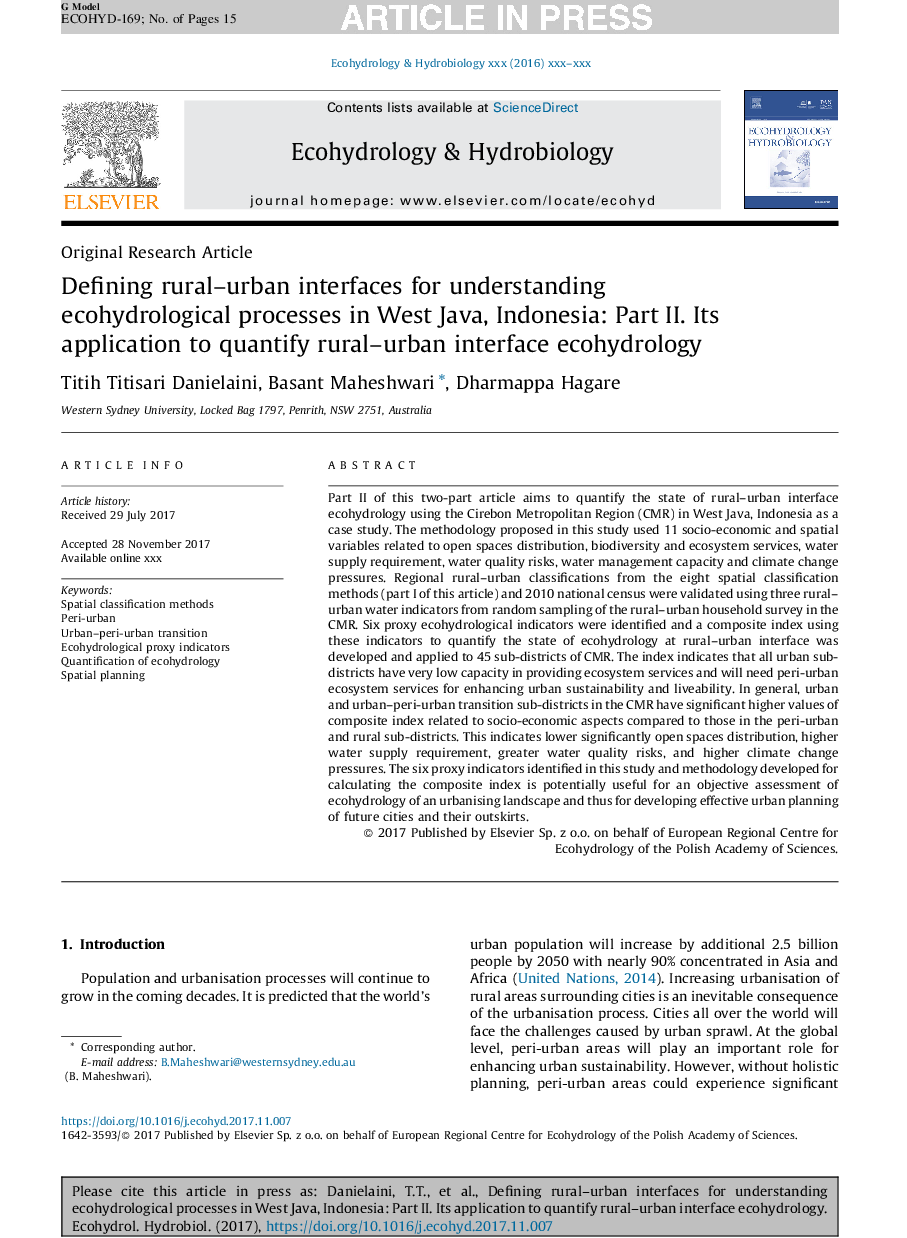| کد مقاله | کد نشریه | سال انتشار | مقاله انگلیسی | نسخه تمام متن |
|---|---|---|---|---|
| 8847672 | 1617965 | 2018 | 15 صفحه PDF | دانلود رایگان |
عنوان انگلیسی مقاله ISI
Defining rural-urban interfaces for understanding ecohydrological processes in West Java, Indonesia: Part II. Its application to quantify rural-urban interface ecohydrology
دانلود مقاله + سفارش ترجمه
دانلود مقاله ISI انگلیسی
رایگان برای ایرانیان
موضوعات مرتبط
علوم زیستی و بیوفناوری
علوم کشاورزی و بیولوژیک
علوم کشاورزی و بیولوژیک (عمومی)
پیش نمایش صفحه اول مقاله

چکیده انگلیسی
Part II of this two-part article aims to quantify the state of rural-urban interface ecohydrology using the Cirebon Metropolitan Region (CMR) in West Java, Indonesia as a case study. The methodology proposed in this study used 11 socio-economic and spatial variables related to open spaces distribution, biodiversity and ecosystem services, water supply requirement, water quality risks, water management capacity and climate change pressures. Regional rural-urban classifications from the eight spatial classification methods (part I of this article) and 2010 national census were validated using three rural-urban water indicators from random sampling of the rural-urban household survey in the CMR. Six proxy ecohydrological indicators were identified and a composite index using these indicators to quantify the state of ecohydrology at rural-urban interface was developed and applied to 45 sub-districts of CMR. The index indicates that all urban sub-districts have very low capacity in providing ecosystem services and will need peri-urban ecosystem services for enhancing urban sustainability and liveability. In general, urban and urban-peri-urban transition sub-districts in the CMR have significant higher values of composite index related to socio-economic aspects compared to those in the peri-urban and rural sub-districts. This indicates lower significantly open spaces distribution, higher water supply requirement, greater water quality risks, and higher climate change pressures. The six proxy indicators identified in this study and methodology developed for calculating the composite index is potentially useful for an objective assessment of ecohydrology of an urbanising landscape and thus for developing effective urban planning of future cities and their outskirts.
ناشر
Database: Elsevier - ScienceDirect (ساینس دایرکت)
Journal: Ecohydrology & Hydrobiology - Volume 18, Issue 1, January 2018, Pages 37-51
Journal: Ecohydrology & Hydrobiology - Volume 18, Issue 1, January 2018, Pages 37-51
نویسندگان
Titih Titisari Danielaini, Basant Maheshwari, Dharmappa Hagare,